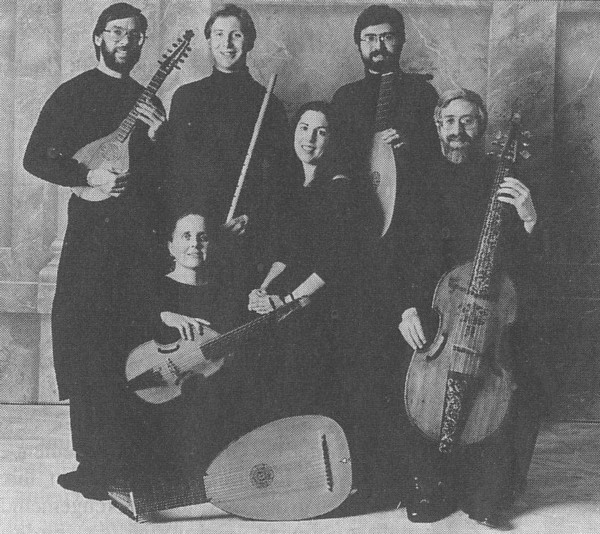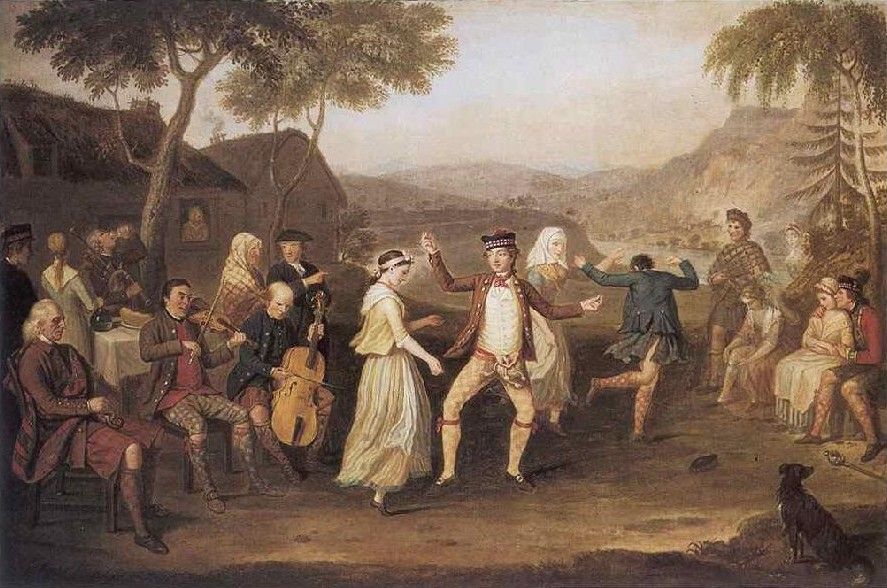On the Banks of Helicon / The Baltimore Consort
Early Music of Scotland

amazon.com
medieval.org
baltcons.com
Dorian DOR-90139
octubre de 1989
Troy Savings Bank Music Hall, Troy NY
1. Over the hills [Pills 1719] [1:13]
2. Kathren Oggie [Panmure MS 7 c. 1680] [2:12]
3. In a garden so green [Forbes 1662] [5:25]
4. My heartly service [Wode 1562-c. 1592] [4:57]
5. Scotch Cap [The English Dancing Master 1651] [2:02]
6. The flowers of the forrest [Skene MS c. 1620] [1:37]
7. Kilt thy coat, Magge [Skene MS c. 1620] [0:56]
8. Canareis [Skene MS c. 1620] [0:39]
9. I will not go to bed till I suld die [Skene MS c.1620] [1:34]
10. Jockey loves his Moggy dearly [Pills] [2:50]
11. Our Father God celestial [Pierre CADÉAC,1538] [5:45]
12. Come my children dere [Margaret Ker's MS n.d.] [2:59]
13. On the banks of Helicon [Andro BLACKHALL 1535-1609] [1:36]
14. Prince Edward's Paven [Wode] [1:31]
15. Lyk as the dum solsequium [Wode] [3:25]
16. The Scots Marche [Eliz. Rogers MS 1656] [2:18]
17. Support your servand [Art of Music c. 1580] [4:17]
18. My Lord of March Paven [James LAUDER 1584] [1:58]
19. O lustie May [Wode] [3:03]
20. Doun in yon bank [Skene] [1:49]
21. Branles d'Ecosse [Estienne du TERTRE,1557] [4:43]
22. Joy to the person of my love [Stirling MS 1639] [8:52]
The Baltimore Consort
Mary Anne Ballard · treble viol, fiddle, bass viol,
tenor viol
Howard Bass · bandora
Mark Cudek · cittern, bass viol
Edwin George* · bagpipe, recorder
Alice Koslosli* alto
Custer LaRue · soprano
Larry Lipkis · bass viol, tenor viol
Ronn McFarlane · lute
Chris Norman · Renaissance flutes
*: guest artists

>PROGRAM NOTES
Most of the Scottish music on this disc is over 400 years old, and yet
it strikes our ears as contemporary in its freshness and originality.
The Scots composers, whose names are mostly lost or at least separated
from their original compositions, had a gift for expressive melody.
Although French and English influence was strong in courtly circles,
the imported genres of dance, chanson and accompanied song were
transformed into a product uniquely Scottish.
In the 16th century, the court of Scotland, like its counterparts to
the south, fostered the sophisticated musical arts ("music fyne") of
church polyphony, courtly song and instrumental consort music. All
Scottish rulers in that turbulent century loved music and poetry, but
the political and religious pressures that determined their marriages
and brought so much pain into their lives also affected the course of
Scottish musical history. James V's French brides (the first died a
year after arriving in 1537) were responsible for a significant
importation of French music. The Scottish Reformation (1560), with its
espousal of simple psalm-singing in the language of the congregation,
eventually brought to an end the institutional patronage of elaborate
polyphonic Latin church music. There were, however, secular musicians
and poets attached to Mary, Queen of Scots, and to her son, James VI,
who produced simpler songs and instrumental consorts of great beauty.
James Lauder, whose Paven dedicated to the Lord of March (1584)
is one of the few datable and attributable works of this period, is
thought to have been a player of viols and virginals. As James VI grew
old enough to assume independence, he gathered about him a group of
poets led by Alexander Montgomerie (author of "Lyk as the dum
solsequium" and "Come my children dere"). Court patronage was lost
altogether in Scotland when James moved south to succeed the childless
Elizabeth I as King of England.
It is in the traditional native airs that we hear the typically
Scottish melodic features of the gapped scale and the rhythmic figure
known as the "Scots snap." As early as the 17th century, aristocrats
such as John Skenes of Hallyards had set about collecting and
preserving these haunting melodies. English art song had begun to
filter into Scotland, but the most significant development was the
Scots' intensified interest in collecting and writing down their own
traditional music, including bagpipe and fiddle tunes. "The flowres of
the forrest", perhaps the most famous of the Skene MS tunes in the
present program, refers to the tragic Battle of Flodden Field (1513),
in which the "flower of Scottish manhood" was cut down (including the
young king, James IV).
Our disc presents a potpourri of "music fyne", traditional native airs,
and English imitations of the latter. The courtly "music fyne" reveals
the stylistic ties between the Scottish and the French repertories:
"Support your servand" is a translation of Clément Marot's
"Secourez-moy, madame, par amours". "Our Father God celestial" is a
metrical paraphrase of The Lord's Prayer sung to the music of a
four-part chanson, "Je suis desheritée", by Pierre
Cadéac. "O lustie May" is set to a French-style galliard. The
boisterous late-15th-century "My heartly service" has been described as
a French "fricassée" (a jumble of ingredients) above an ostinato
bass. In this amusing piece, originally associated with an ancient
ceremony in which herdsmen dressed as beasts pulled a plow to mark the
beginning of the plowing year, two voices call out the names of oxen as
well as their fellow herdsmen, and then enumerate the parts of a plow.
Beginning early in the 17th century, the English developed a taste for
"Northern tunes". "The Scots March" is one of many such titles in the
virginal manuscripts. "Joy to the person" found its way into English
broadsides. The Playfords, especially, began to include music "after
the Scotch humour" in their publications. "Scotch Cap" is one of
several Scots-style tunes in The English Dancing Master (1651).
By the end of the century, famous composers such as Purcell (in his
"Birthday Ode for Queen Mary") and Nicola Matteis ("Ground after a
Scotch Humor") had tried their hand at arranging Scottish melodies, and
the Playfords had published A Collection of Original Scotch Tunes:
Full of Highland Humours for the Violin (1700). Thomas D'Urfey's Wit
and Mirth: or Pills to Purge Melancholy (1st edition, 1698) was the
first English publication to contain both words and music of Scots
songs (some written by Englishmen, others originating in Scotland).
"Jockey loves his Moggy dearly" is typical of the English forays into
Scots dialect.
The instruments used on this recording are similar to those known to
have been popular at the Scottish court. An inventory of Holyrood House
(the court residence) shows that the court owned a lute, a cittern, a
bandora, and viols, the very instruments that form the core of The
Baltimore Consort. To this group of soft instruments we have added
flute and also a single-drone bagpipe of a type which was common
throughout Europe for centuries.
The words of most songs here are in Scots, a dialect which was not only
spoken, but flourished as a literary language in the 16th century. It
is very close to English and can be understood by English-speaking
people as long as a few specialized words are defined and conventions
of spelling are understood.
— Mary Anne Ballard



